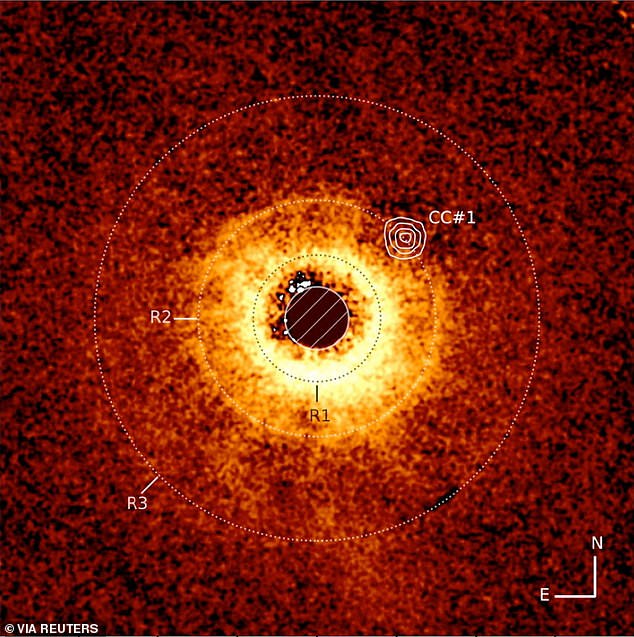
Webb Telescope Reveals First Direct Image of Glowing Saturn-Sized Exoplanet
James Webb Telescope Captures Historic First Direct Image of Saturn-Sized Exoplanet
[Image: James Webb Space Telescope image of TWA 7b, a faint orange dot near hidden starlight.]
The James Webb Space Telescope (JWST) has achieved a milestone: its first direct image of an exoplanet, TWA 7b, located 111 light-years away. This Saturn-mass world, roughly 100 times Earth’s size, is the smallest exoplanet ever directly observed—10 times less massive than previous direct imaging targets.
Breaking New Ground
While JWST has identified hundreds of exoplanets indirectly by analyzing starlight dimming (the "transit method"), TWA 7b was spotted using advanced coronagraph technology. By mimicking an eclipse, the telescope blocked its host star’s glare, revealing the planet’s faint infrared signature.
Lead researcher Dr. Anne-Marie Lagrange explained, “Detecting exoplanets is challenging, and imaging them is even harder. Previous directly imaged planets were giants, multiple times Jupiter’s mass.” TWA 7b orbits TWA 7, a young red dwarf star surrounded by three debris rings, viewed “top-down” for optimal observation.
[Image: Composite view combining ground-based Very Large Telescope data (blue debris field) and JWST’s infrared detection (orange circle). The star is masked with a white symbol.]
Why This Discovery Matters
Exoplanets are notoriously difficult to image due to their proximity to bright stars. Young systems like TWA 7, aged 6.4 million years, emit residual heat from debris rings, aiding detection. JWST’s coronagraph and post-processing removed lingering starlight, exposing an infrared source in a gap within the innermost debris ring. This “hole” suggests gravitational interactions with a planet clearing its orbital path.
At 47°C (120°F) and 52 times Earth’s distance from the Sun, TWA 7b is likely a frigid gas giant. Though background galaxy interference is possible, data strongly supports a planetary origin. The discovery also marks the first observed “Trojan Ring,” a thin belt shaped by the planet’s gravity—a phenomenon predicted but never seen.
Future Exploration
While JWST can now detect planets as small as 10% of Jupiter’s mass, Earth-like worlds in habitable zones remain beyond its reach. Dr. Lagrange notes future missions, like NASA’s proposed Habitable Worlds Observatory, will be needed to search for life-supporting exoplanets.
[Image: Artist’s impression of an exoplanet obscured by starlight, illustrating detection challenges.]
TWA 7b Key Facts
- Mass: Comparable to Saturn
- Distance from Earth: 111 light-years
- Orbital Distance: 52x Earth-Sun separation
- Temperature: 47°C (120°F)
This breakthrough offers insights into planetary formation and positions JWST as a cornerstone for unraveling cosmic origins. As technology advances, the next era of telescopes may finally answer whether we’re alone in the universe.
[Image: JWST’s powerful mirrors poised in space, underscoring its role in revolutionizing exoplanet imaging.]
Cover image credit: NASA/ESA/CSA


